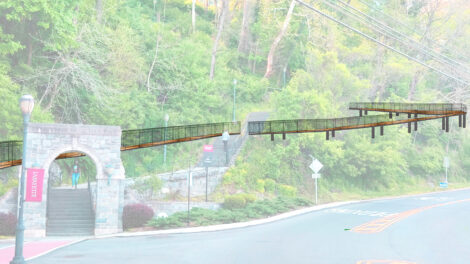Lafayette dedicates new greenhouse
Students and staff are now able to get a jump-start on the growing season as a result of the new 30-by-48-foot greenhouse located at LaFarm. Members of the Lafayette community, along with generous supporters of the structure, including Heidi Ludwick Hanson ’91 and Daniel Hanson, and representatives from the Spring River Foundation, toured the facility at the dedication and luncheon held April 30. The greenhouse also was made possible by support from Capital Blue Cross.
Not only does the greenhouse offer additional propagation space, it provides opportunities for students to gain hands-on experience and knowledge about organic and regenerative gardening regardless of weather conditions. Space in the greenhouse is also available to community gardeners.
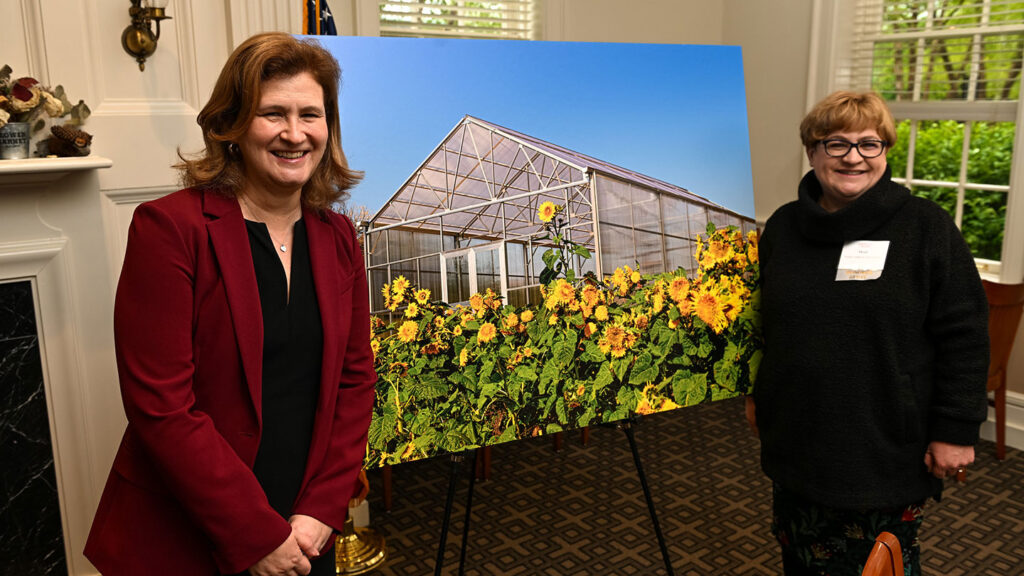
President Nicole Hurd and Heidi Ludwick Hanson ’91 celebrate the new greenhouse at LaFarm. The greenhouse was made possible in part through support from Hanson and her husband Daniel.
The state-of-the-art structure features a heater, cooling fans, a ridge vent to passively cool with minimal electricity, and a retractable shade system. An automated control panel monitors indoor temperature and humidity, and also can monitor outdoor weather conditions, including wind and precipitation.
Delicia Nahman, director of sustainability, spoke about the impact of LaFarm and the new greenhouse on sustainability efforts at Lafayette. “It is a space that is really about campus community engagement. It is a space that focuses on food systems, on issues around justice, climate adaptation, and resiliency,” said Nahman at the event. “It is a space where we are able to bring community partners to campus and in which we are able to take campus impact and extend it beyond our borders, and that happens in many different ways.”
At LaFarm students learn state-of-the-art organic and regenerative farming practices while participating in sustainability efforts that directly benefit Lafayette and the local community. Not only does LaFarm provide a space for students to participate in collaborative education and research, but the working farm supplies Lafayette’s dining halls with organically grown produce and follows a sustainable food loop through composting practices.
At the dedication, President Nicole Hurd spoke about the significance of providing first-class experiences for students and the importance of alignment. “What I love about LaFarm is this is one of the spaces where we’re in alignment,” explained Hurd during her remarks. “We have the academic pieces with faculty involved, we have staff involved, and we have our hearts. On this campus, our hearts are always our students. You all are TrueNorth.”
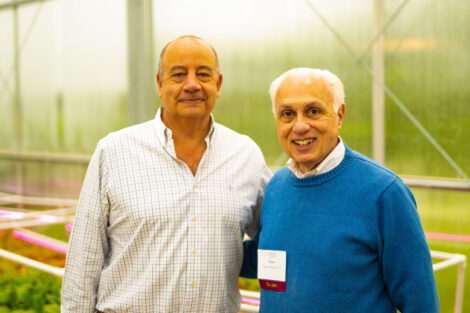
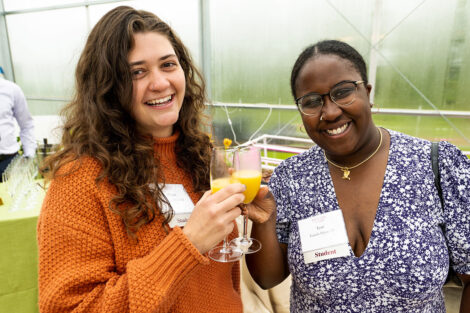
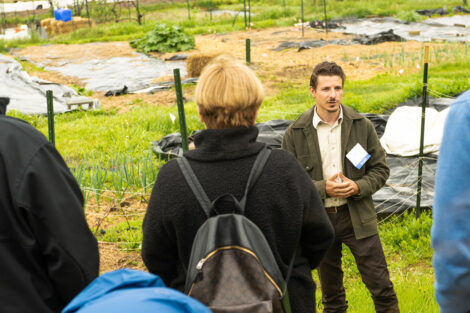
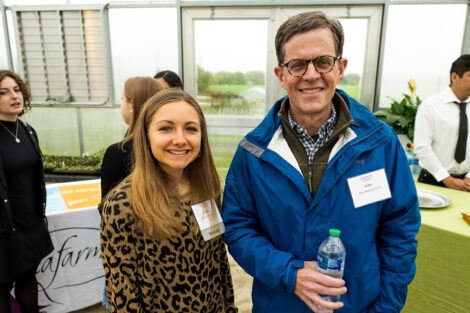
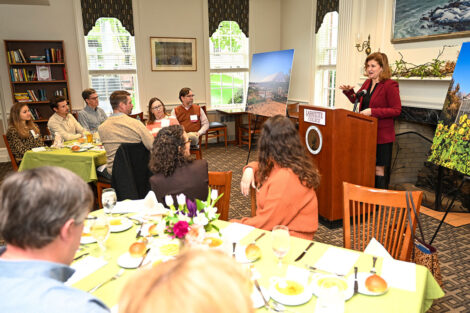
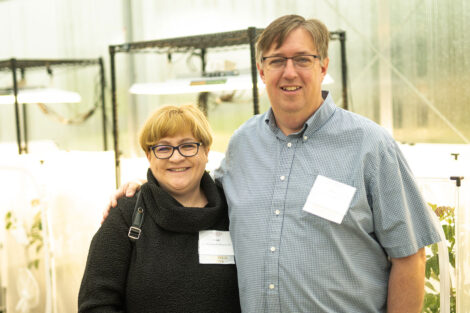
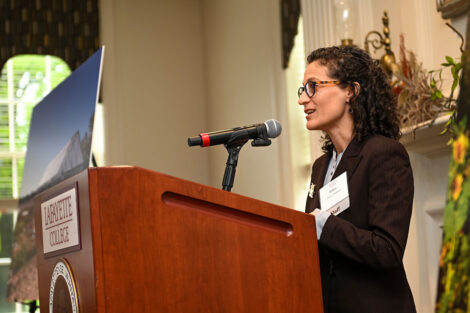
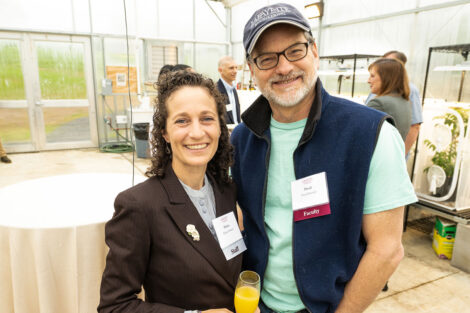
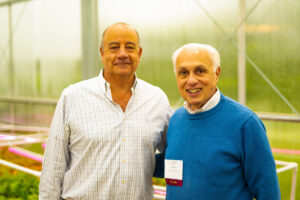
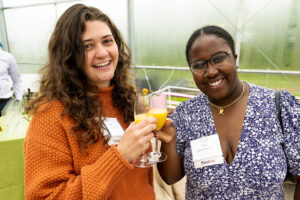
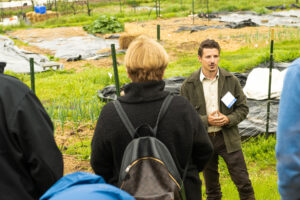

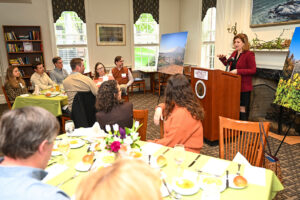
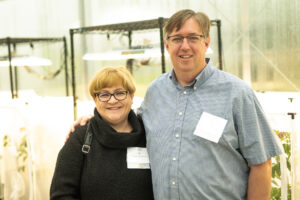
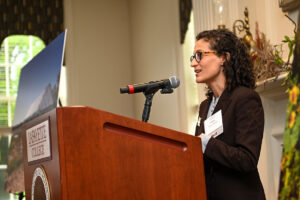
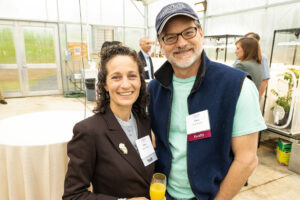
International affairs major Teniola Bakare ’23 worked at LaFarm throughout her four years at Lafayette. Bakare represents 25% of all Lafayette students who are engaged at some point with LaFarm either through courses, volunteering, or paid positions. In her full-time student management position, Bakare coordinated the Vegetables in the Community program and was involved in all aspects of the farm from planting and harvesting to coordinating farmer market sales. She also is coordinating a Mother’s Day plant sale this semester.
“I think I can speak for a lot of students in the room when I say that LaFarm is a space that creates a community for students to express themselves and be themselves, and have something that’s so different from the rest of campus,” said Bakare during her remarks. “Obviously our campus is very beautiful, and it has a lot of trees. But there’s something very unique about going to a farm and getting on your hands and knees and digging, weeding, and planting something. Then, when you go to the dining halls and your friends say, ‘Oh my gosh, that kale is from LaFarm? Did you grow it?’ And I say, For sure. I grew that!”
Among the many individuals who recognize the impact of the greenhouse on LaFarm, Lafayette College, and the surrounding community, Josh Parr, manager of food and farm at the College knows all too well how crucial this new structure is to the future of LaFarm. Parr was on hand to explain the benefits and provide a tour of the new greenhouse during the dedication.
“A propagation greenhouse like this is a crucial piece of infrastructure on vegetable farms, and the size of a greenhouse is closely linked to how much land you can cultivate, and thus how much food you can produce. This greenhouse could support a vegetable farm up to three times LaFarm’s current size, and so it allows us to seriously consider the possibility of expanding LaFarm in the years to come,” explains Parr. “But the greenhouse has many immediate benefits as well. It allows us to grow much higher quality transplants for ourselves, while offering that same resource to our community partners at Easton Garden Works and Easton Urban Farm. It has also created research partnerships; for example, with the USDA, whose researchers are using the greenhouse to rear spotted lantern fly for study. Finally, it gives us room to grow transplants for a spring plant sale, which will be a great resource for our community as well as an important new revenue stream for the farm.”
To learn more about the new greenhouse and LaFarm, contact Josh Parr, manager of food and farm, at parrj@lafayette.edu.

